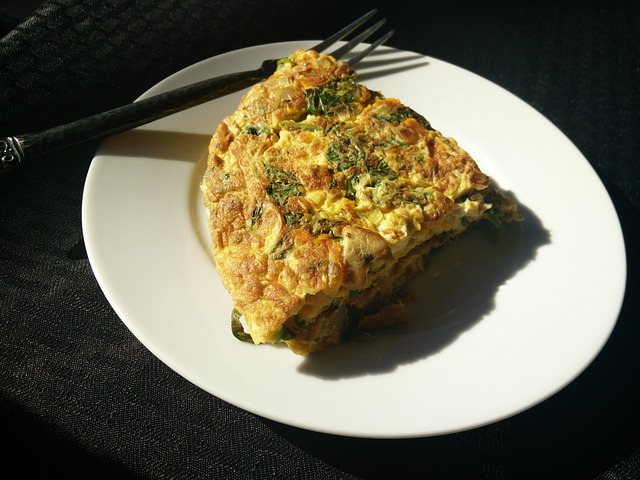The Paleo Diet, also known as the Paleolithic or Caveman Diet, is a dietary approach that mimics the eating patterns of our ancient ancestors. It emphasizes whole, unprocessed foods that were available to early humans during the Paleolithic era. In this article, we delve into the origins, components, health benefits, and potential drawbacks of the Paleo Diet. Whether you’re looking to improve your overall well-being or seeking a sustainable approach to weight loss, this guide will provide you with the essential information to get started on your Paleo journey.
What is the Paleo Diet?
The Paleo Diet is based on the premise that our bodies are genetically adapted to thrive on the foods consumed by our hunter-gatherer ancestors. The diet emphasizes whole, nutrient-dense foods while excluding processed foods, grains, legumes, dairy products, refined sugars, and vegetable oils.
The concept of the Paleo Diet originated in the 1970s and gained popularity in the 2000s. It was popularized by Dr. Loren Cordain, a renowned scientist and researcher in the field of evolutionary nutrition. The Paleo Diet draws inspiration from the eating habits of our Paleolithic ancestors, who primarily consumed lean meats, fish, fruits, vegetables, nuts, and seeds.
Components of the Paleo Diet
The Paleo Diet focuses on whole, unprocessed foods that are nutrient-dense and provide a range of health benefits. The key components of the diet include:
- Lean Protein: Grass-fed meats, poultry, and wild-caught fish are primary sources of protein in the Paleo Diet. These sources are rich in essential amino acids, omega-3 fatty acids, and vitamins and minerals.
- Fruits and Vegetables: The diet encourages a wide variety of colorful fruits and vegetables, which provide fiber, antioxidants, vitamins, and minerals.
- Healthy Fats: Nuts, seeds, avocados, and healthy oils like olive, coconut, and avocado oil are included in the diet to provide essential fatty acids and promote satiety.
- Nuts and Seeds: Almonds, walnuts, flaxseeds, and chia seeds are nutrient-dense additions that provide healthy fats, fiber, and micronutrients.
Health Benefits of the Paleo Diet
The Paleo Diet has been associated with several potential health benefits:
- Weight Loss: The emphasis on whole, unprocessed foods and the removal of refined sugars and processed carbohydrates can lead to weight loss and improved body composition.
- Improved Blood Sugar Control: By eliminating refined sugars and grains, the Paleo Diet can help stabilize blood sugar levels and reduce the risk of insulin resistance and type 2 diabetes.
- Enhanced Nutrient Intake: The focus on whole foods provides a wide range of vitamins, minerals, antioxidants, and phytochemicals, promoting overall health and well-being.
- Reduced Inflammation: The elimination of processed foods and potential food allergens, such as gluten and dairy, can help reduce inflammation in the body.
- Increased Satiety: The higher protein and fiber content of the Paleo Diet can promote feelings of fullness and reduce cravings, supporting healthy weight management.
Eating Guidelines in the Paleo Diet and Macro Nutrient Ratios
The Paleo Diet provides a set of eating guidelines that focus on consuming whole, unprocessed foods similar to those of our ancestors. While there is no specific macro nutrient ratio prescribed in the Paleo Diet, it generally emphasizes a balance of macronutrients that aligns with a healthy and natural eating pattern. Here are some guidelines to consider:
- Prioritize Protein: Protein is a crucial component of the Paleo Diet. Aim to include high-quality sources of protein such as grass-fed meats, wild-caught fish, poultry, eggs, and plant-based options like legumes and nuts. Protein should make up approximately 25% to 35% of your total daily calorie intake.
- Include Healthy Fats: Healthy fats play an important role in the Paleo Diet. Sources like avocados, nuts, seeds, coconut oil, and olive oil provide essential fatty acids and contribute to satiety. Aim for approximately 30% to 40% of your daily calories to come from healthy fats.
- Consume Nutrient-Dense Carbohydrates: While the Paleo Diet limits refined carbohydrates, it encourages the consumption of nutrient-dense carbohydrates from fruits, vegetables, and limited amounts of starchy tubers like sweet potatoes. These should make up the remaining 30% to 40% of your daily calorie intake.
- Individualize Portion Sizes: The specific macro nutrient ratios within the Paleo Diet can vary depending on individual goals, activity levels, and personal preferences. It’s important to adjust portion sizes and ratios based on your unique needs.
- Listen to Your Body: Pay attention to how different macronutrient ratios make you feel. Some individuals may benefit from slightly higher or lower protein or fat intake, depending on factors like metabolic health, athletic performance, or weight management goals. Experiment and find the ratios that work best for you.
Remember, the Paleo Diet is a flexible framework, and the focus should be on consuming nutrient-dense, whole foods while avoiding processed and refined options. It’s important to listen to your body, consult with a healthcare professional or registered dietitian if needed, and make adjustments based on your individual needs and goals.
How to Get Started with the Paleo Diet
Getting started with the Paleo Diet involves a few key steps:
- Educate Yourself: Learn about the principles and guidelines of the Paleo Diet to understand what foods are allowed and which ones to avoid.
- Plan Your Meals: Create a meal plan that includes a variety of lean proteins, fruits, vegetables, healthy fats, and nuts/seeds. Experiment with different recipes and cooking methods to keep your meals exciting and satisfying.
- Transition Gradually: Start by gradually reducing processed foods and increasing whole foods in your diet. Gradual transitions tend to be more sustainable and allow your taste buds to adjust.
- Be Mindful of Sourcing: Whenever possible, choose organic, grass-fed, and pasture-raised options to maximize the nutritional quality of your food.
- Stay Hydrated: Drink plenty of water throughout the day to stay hydrated and support overall health.
Potential Drawbacks of the Paleo Diet
While the Paleo Diet has several potential benefits, it’s important to consider some potential drawbacks:
- Nutrient Deficiencies: The elimination of certain food groups, such as grains and dairy, may lead to potential nutrient deficiencies. Careful planning and variety in food choices can help mitigate this issue.
- Practicality and Cost: The Paleo Diet can be more expensive and require additional preparation time due to the emphasis on high-quality, organic foods. It may also be challenging to adhere to the diet in certain social settings or when dining out.
- Limited Carbohydrate Options: For individuals who engage in high-intensity exercise or require higher carbohydrate intake, the Paleo Diet may not provide enough readily available carbohydrates.
- Sustainability: The environmental impact of consuming large amounts of animal products may be a concern for some individuals. It’s important to prioritize sustainably sourced and ethically raised animal products whenever possible.
Conclusion
The Paleo Diet offers a framework for adopting a whole-foods-based approach to nutrition, drawing inspiration from our ancestral roots. By focusing on nutrient-dense foods and eliminating processed options, individuals may experience weight loss, improved blood sugar control, enhanced nutrient intake, and reduced inflammation. However, it’s important to consider individual needs, preferences, and any potential drawbacks before embarking on the Paleo Diet. Consulting with a healthcare professional or registered dietitian can provide personalized guidance and ensure the diet is suitable for your specific needs. With careful planning, the Paleo Diet can be a sustainable and effective way to promote overall health and well-being in the modern world.
Image by mhburton from Pixabay
Diet and Nutrition
-

Role of Nutrition in Hormonal Balance – Foods to Eat and Avoid
In my capacity as a natural health practitioner, I’ve observed an intricate tapestry where nutrition, hormones, and overall well-being are seamlessly interwoven. The profound influence that dietary choices exert on hormonal balance can’t be overstated. Whether you’re facing symptoms of hormonal disruption or merely wish to fortify your endocrine health, understanding the role of nutrition…




Leave a Reply